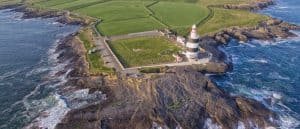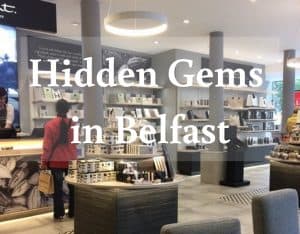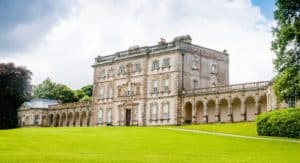The Maasai Mara: Balancing Wildlife Conservation with Tribal Heritage

Updated On: April 17, 2024 by Eman Sameh
Nestled in southwest Kenya, the Maasai Mara is a spectacle of thriving ecosystems and vibrant cultures. This region, renowned for its sprawling savannahs and remarkable biodiversity, has become a bastion for wildlife conservation, drawing the attention of environmentalists and nature enthusiasts worldwide. Our collective efforts to preserve the wildlife within this part of the world are juxtaposed with the resilience and customs of the Maasai people, whose lives are intertwined with the land and its inhabitants.

The Maasai community has maintained a pastoral way of life for generations, with their distinctive traditions and deep respect for nature forming the region’s social fabric. Their traditional practices, though challenged by modernity and socio-economic changes, continue to shape the landscape and the sustainability of the Mara. At the same time, the very essence of this region’s popularity brings forth additional challenges, such as human-wildlife conflict and the pressure of wildlife tourism.
The Maasai Mara Ecosystem
Within Kenya’s vast natural tapestry, the Maasai Mara is an emblem of wild Africa, characterized by its diverse wildlife, dynamic climate, and sweeping landscapes.
Wildlife and Biodiversity
The Maasai Mara is home to an astonishing variety of wildlife. Iconic African elephants roam alongside towering giraffes, whereas leopards and cheetahs stealthily tread through the savannah. The wildebeest migration, a spectacle involving over a million animals, exemplifies the region’s biodiversity, with zebras and gazelles joining the formidable herds. Hyenas often trail the herds, contributing to the ecosystem’s complex predatory hierarchy.
Climate and Seasons
Climate patterns in the Maasai Mara are marked by two dry seasons and two wet seasons. From June to October, the main dry season coincides with the wildebeest migration, making it a peak time for wildlife watching. The long rains from March to May rejuvenate the landscape, while a shorter rain period occurs between November and December, both crucial for maintaining the delicate balance of this ecosystem.
Rivers and Grasslands
The lifeblood of the Maasai Mara ecosystem is its river system, with the Mara River being the most prominent. These waterways support the region’s lush grasslands and provide critical resources for both wildlife and local Maasai communities. The interconnectedness of rivers and rolling grasslands creates a rich habitat that sustains the ecosystem’s complex food webs.
Maasai People: Culture and Heritage
The Maasai community is renowned for its rich cultural heritage, which is deeply interwoven with their identity as an indigenous people. We explore their social structures, cultural practices, and the symbolism inherent in their traditional dress.
Tribe and Community
The Maasai tribe is a semi-nomadic group indigenous to East Africa. Its social structure is centred around family and age sets. Warriors, known as Morans, hold a significant position within the Maasai community and are responsible for protecting the tribe and its cattle. Traditionally, circumcision marks the rite of passage into manhood and is of profound importance in Maasai culture.
Cultural Practices and Traditions
The Maasai are custodians of unique cultural practices that have been passed down through generations. Their traditions encompass communal living and a deep respect for the environment. One integral practice involves the ‘Adumu’, a traditional dance where warriors leap into the air, demonstrating strength and agility.
Dress and Symbolism
Distinctive and colourful, Maasai dress is practical and rich in symbolism. Beading, carried out predominantly by women, is a craft that communicates age, social status, and marital standing. Red, a prominent colour in their clothing, symbolises courage, strength, and unity, reflecting the Maasai’s intimate connection with the earth.
Conservation Efforts in the Maasai Mara

Conservation efforts in the Maasai Mara are multifaceted. They focus on preserving rich biodiversity while balancing the needs of the local communities. We continue to witness significant strides in implementing measures to maintain this key ecosystem.
Protected Areas and Reserves
The Maasai Mara National Reserve is the cornerstone of wildlife conservation in the region. Further efforts extend beyond its borders through various conservancies and protected areas. Together, they form a network that sustains and enhances the ecological integrity of the Mara ecosystem. For instance, the Mara North Conservancy is a substantial private wilderness area that acts as a buffer zone to the national reserve.
- Key Protected Areas
- Maasai Mara National Reserve
- Mara North Conservancy
- Adjacent community conservancies
Wildlife Preservation Strategies
Wildlife preservation strategies within the Maasai Mara hinge on collaboration between conservationists, rangers, and landowners. Efficient anti-poaching units and the deployment of electric fences in strategic areas are practical measures in place. Such initiatives ensure the protection of diverse species, with rangers often playing the critical role of monitoring and safeguarding wildlife.
- Strategies Implemented
- Anti-poaching units
- Regular patrols
- Installation of electric fences
Community-Based Conservation
The synergy between wildlife conservation and community development is pivotal in the Maasai Mara. We have witnessed the rise of community-based conservation where the Maasai people are integral in preserving the ecosystem. The emphasis on economic benefits such as revenue from eco-tourism has encouraged local populations to coexist harmoniously with nature, reinforcing their role as stewards of the land.
- Community Roles
- Engagement in eco-tourism projects
- Participation in decision-making
- Ownership of conservancies
Through these concerted efforts in the Maasai Mara, our dedication to protecting this majestic landscape ensures its survival for future generations.
Maasai Mara and Wildlife Tourism
The Maasai Mara is a cornerstone of Kenya’s wildlife tourism, offering a safari experience that fuels the region’s economic prosperity. Through the iridescent dawn, visitors traverse rolling grasslands teeming with the Big Five, cultivating a symbiosis between nature and commerce.
Safari Experience
The Maasai Mara, known for the Great Migration, provides a canvas of wild beauty seen nowhere else on Earth. Our safari operators tailor journeys through this untamed wilderness, ensuring that every traveller’s encounter with Africa’s iconic species is both intimate and respectful. The quintessential safari adventure unfolds across the savannah, with majestic lions and towering giraffes as witnesses to humanity’s fascination with the natural world.
Economic Importance of Tourism
Tourism represents a substantial economic pillar to the Maasai Mara, with visitors flocking from across the globe, drawn by the allure of abundant wildlife and preserved cultural heritage. Economic value blooms from every booked safari and lodge stay, supporting local communities while reinforcing the necessity for ongoing conservation efforts. Through this financial vein, we see the power of responsible tourism to uplift and sustain both people and wildlife.
Pastoralism and Livestock Rearing

Pastoralism and livestock rearing are fundamental to the Maasai Mara community, where cattle are not only a source of substance but also a cornerstone of their cultural identity.
Herding Traditions
The Maasai have maintained a nomadic lifestyle for centuries, upheld by their deeply rooted herding traditions. Livestock, such as cattle, sheep, and goats, are the primary wealth and livelihood of the Maasai people. Cattle are particularly revered, symbolising status and social capital within the community. Our herding techniques are centred on communal stewardship and reflect an intricate understanding of the ecology of the Mara. This approach ensures that our cattle benefit from the best grazing, which is done in harmony with the rhythms of the ecosystem.
Grazing Lands and Pastures
Traditionally, the Maasai have shared expansive grazing lands and pastures, which allows them to practice rotational grazing—a method that prevents land degradation and promotes sustainable livelihoods. These pastoral lands are often unfenced to enable free movement, which is vital for accessing diverse grazing resources and water. The pasture quality within the Maasai Mara can vary, influenced by both natural factors and human activity. Our lands are carefully managed to balance the needs of our livestock with the conservation efforts that protect the Mara’s renowned biodiversity.
Human-Wildlife Conflict

In the Maasai Mara, the escalation of human-wildlife conflict poses significant challenges, often leading to tragic outcomes for both local communities and conservation efforts. Strategies to mitigate these conflicts focus on the core issues of predator attacks on livestock and the management of land use and boundaries.
Predators and Livestock
Predators, such as lions, are integral to the wildlife population and ecosystem of the Maasai Mara. However, when these predators attack livestock, which are the economic backbone of the Maasai, a serious conflict arises. Our approach includes:
- Intervention Measures: Using deterrents and improved fencing techniques to reduce attacks.
- Community Engagement: Promoting understanding and coexistence strategies like lion collaring to track movements.
Land Use and Boundaries
The demarcation of land use and boundaries is vital to preserving the natural habitats of wildlife and maintaining the traditional Maasai grazing lands. Efforts in this regard include:
- Zoning Initiatives: Clearly defining areas for conservation and areas for pastoral use.
- Conflict Mitigation: Developing sustainable conservation practices that reconcile the needs of wildlife with those of local communities.
Environmental Challenges

The Maasai Mara faces significant environmental issues that threaten both the wildlife and the tribal communities residing within this region. These challenges require urgent attention and action, from the severe impacts of climate change to the pressing scarcity of vital resources.
Climate Change Impacts
Climate change has become a pressing concern for the Maasai Mara ecosystem, impacting the delicate balance of this region. Altered rainfall patterns and increasing temperatures have led to more frequent and severe droughts, significantly affecting wildlife populations and habitats. These conditions also exacerbate conflicts between humans and wildlife as they compete for dwindling natural resources, such as clean water and grazing areas.
Drought and Resource Scarcity
Drought presents a relentless challenge, with water sources becoming increasingly scarce. The scarcity of natural resources directly impairs the Maasai community’s ability to sustain its livestock—a cornerstone of its culture and economy. Furthermore, limited rainfall reduces the region’s capacity to support both the indigenous populations and the diverse wildlife that rely on the Maasai Mara for survival.
Socio-Economic Dynamics

In the Maasai Mara, the socio-economic dynamics are deeply entwined with wildlife conservation efforts and the preservation of tribal traditions. We shall explore the crucial roles education and healthcare play in shaping sustainable futures for the Maasai community.
Education and Schools
The Maasai community places significant value on education as a tool for empowerment and economic development. Schools in the Maasai Mara are not just centres for learning but also sanctuaries that offer children an escape from poverty and a ladder to sustainable livelihoods. It is here that the seeds of human rights and environmental stewardship are planted, equipping the young to balance modernity with respect for tribal traditions.
Healthcare and Resources
Access to healthcare remains a challenge in the Maasai Mara. While traditional medicine is woven into the fabric of Maasai life, there is an ever-growing need for modern healthcare facilities and resources. Investments in healthcare foster healthier communities, which in turn can better engage in conservation activities and other income-generating ventures that respect the intricate ties between humans, wildlife, and the environment.
Land Ownership and Community Benefits

In the Maasai Mara, the intricate relationship between land ownership and community benefits is pivotal for sustainable livelihoods, underscoring the significance of conservancies and their revenue-sharing models.
Conservancies and Landowners
Conservancies in the Maasai Mara, such as the Kuku Group Ranch, play a crucial role in wildlife conservation while offering economic value to the local Maasai landowners. These communal lands are leased to conservancies, which, in turn, manage them for eco-tourism by establishing luxury camps and lodges. Landowners earn a steady income from lease payments, ensuring they benefit financially from preserving the land rather than converting it for farming or real estate development.
Revenue Sharing and Development
Under the conservancy model, revenue sharing ensures that tourism profits flow back into local communities. This can manifest in funding schools, healthcare facilities, and infrastructure projects. Economic incentives from tourism help reinforce the value of wildlife conservation among landowners, and this sustainable revenue model strengthens community support for conservation efforts. In essence, the landowners sustain their traditional way of life while actively participating in protecting Kenya’s natural heritage.
Challenges and Future Prospects

In confronting the issues affecting the Maasai Mara, we face a complex interplay of preservation and progression, where the sustainability of efforts and community heritage stand central.
Conservation in the 21st Century
The 21st century presents a myriad of challenges for conservation efforts. The Maasai Mara is a key player in global conservation due to its rich biodiversity. However, balancing sustainable development with preserving natural resources is a daily struggle. In recent efforts, the Maasai Mara Wildlife Conservancies Association has played a pivotal role by integrating community land into the larger conservation blueprint. Our future is inextricably tied to the success of such initiatives, which are designed to serve both the wildlife and the communities who share their land with the world’s most majestic creatures.
Maasai Mara’s Global Significance
The global significance of the Maasai Mara cannot be overstated. World-renowned for its wildlife, the Maasai Mara is central to Kenya’s tourism and the local economy. Conservation efforts here must be effective and enduring. The World Wide Fund for Nature (WWF) has supported projects that aim to reduce human-wildlife conflict, demonstrating how international partnerships can foster progress. Within the broad spectrum of global conservation, the Maasai Mara is a testament to the incredible value of natural wonders and the importance of maintaining them for future generations.
Frequently Asked Questions
the Maasai Mara –
Before delving into the details, it’s crucial to understand the significant conservation efforts and enduring traditions of the Maasai people that shape the Maasai Mara. We’ll address common inquiries about conservation methods, Maasai customs, and the necessary balance between tourism and preserving this precious ecosystem.
What conservation methods are employed to protect the wildlife in the Maasai Mara?
We employ various conservation methods to protect the Maasai Mara’s wildlife, including anti-poaching campaigns, habitat restoration projects, and community education programmes. These ensure protection for iconic species such as lions, whose numbers have declined significantly in recent years.
Can you explain the traditional customs of the Maasai people?
The Maasai people are known for their distinctive dress and cultural practices, which include traditional ceremonies, pastoralism, and intricate beadwork. These customs are deeply interwoven with their respect for the natural environment.
How do the Maasai people coexist with the wildlife within the Maasai Mara ecosystem?
Coexistence in the Maasai Mara is facilitated by the Maasai’s semi-nomadic lifestyle and their indigenous knowledge of the land and animal behaviour. This symbiotic relationship is central to their survival and the health of the ecosystem.
What measures are taken to balance tourism and conservation in the Maasai Mara?
Balancing tourism and conservation involves implementing strict wildlife viewing codes, limiting the number of visitors, and promoting eco-friendly lodges. These measures help preserve the Masai Mara National Reserve and its surroundings.
In what ways are the Maasai tribe’s cultural practices reflected in their daily life today?
Maasai tribe’s cultural practices continue to be reflected in their daily life through their pastoral lifestyle, communal living, and reverence for cattle. These practices are integral to their identity and economic well-being.
What role does the Maasai community play in the governance and management of the Maasai Mara reserve?
The Maasai community plays a pivotal role in the governance and management of the Maasai Mara reserve by participating in decision-making processes, benefitting from eco-tourism, and supporting conservation efforts that protect their ancestral land while ensuring sustainable livelihoods.






